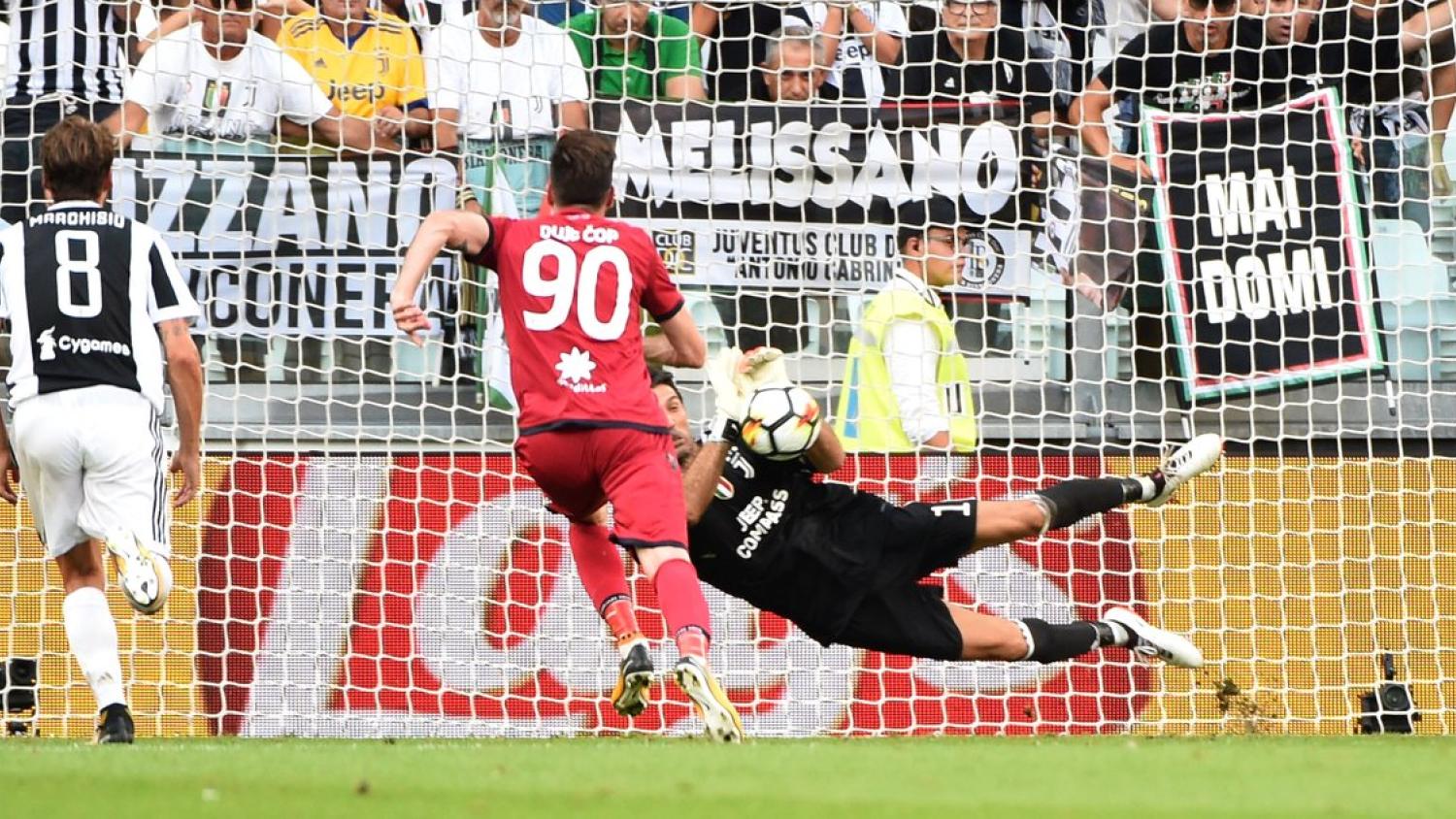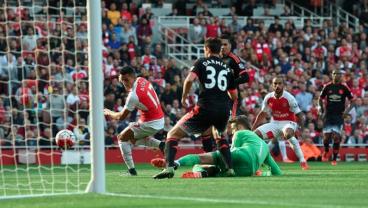This was the first week of the new Serie A season. Things seemed to go according to plan. Juventus won. Fiorentina played like a bunch of hastily assembled strangers. Napoli played free flowing, attractive football and almost undid itself in the end. Everything went according to plan. So, there’s not really a result that stands out from the rest in terms of demanding the attention. But that’s because there’s a new game in town.
This was the first week of the new Serie A season but it was also the dawn of a new era. For the first time in the Italian league, VAR was used. The video assistant referee is supposedly designed to eliminate mistakes and errors from the game and allow the officials to make the most informed decisions possible. The aim was to do away with all of those questionable decisions, the petty arguments so beloved of fans and managers of losing sides. But this is Italy. Rather than settle any arguments, the new era of Serie A and VAR has kicked off more discussions than ever before.
First, there’s the question of the article itself. VAR, standing for video assistant referee, is not an Italian acronym. So, when the pundits began to discuss the technology, there was a brief interlude during which the hosts and panelists wrangled with the gender of the VAR. Was it ‘la VAR’ or ‘il VAR’? Feminine or masculine? It’s a conversation that happens whenever a new foreign word is introduced into the Italian lexicon. Gradually, everyone will come to a conclusion. Until then, VAR exists in a linguistic netherworld, no one quite sure of how to address the system.
And then there’s the deployment. For those watching at home, in bars or in the stadiums, the introduction of VAR was not accompanied by a blanket of public awareness announcements. So, when the various games were stopped and the referees performed the gesture indicating that VAR will be used, plenty of people were left stranded. “What’s that?” “What’s he doing?” And so on and so forth. People would have to lean into one another and explain the introduction of VAR and how it was about to be used.
This adds in a new moment into a match. Football has been around long enough without much in the way of changes (incremental law variations aside) that people pretty much know how to act in any moment. After a goal, you celebrate. After a near miss, you gasp. During a Chievo match, you check your phone and look for something else to do. But this new technology brings with it a strange moment. It confused those in the stadium, the officials, the television crews and the players themselves.
While a decision is being made, everyone is left wondering how to react. Celebrate or not celebrate? Be angry or relieved? During the game between Inter and Fiorentina, for example, the referee was left strolling around the pitch while awaiting feedback. The TV cameras followed him, not sure whether they should cut away. The players went to take a drink and have a word with the coach, the moment becoming a makeshift water break. Fans were left bemused by the pause, unsure of how long it was going to take. It’s going to take a while before people know how to react to VAR moments.
These are all cultural changes and will mostly vanish as the novelty wears off. What is more important is the tangible influence the technology has had on the games played this weekend. So how were they affected?
Perhaps most surprising to a certain cynical sect of Serie A fans was that the first use of VAR came with a decision against Juventus. Forty minutes of the season’s first game had been played and the referee decided that he needed a better look at an Alex Sandro challenge in the Juve box. After review, he awarded the penalty. And rightly so. Gianluigi Buffon then stepped up and saved the penalty, a moment of old school defiance in the face of new technology.
It’s important to acknowledge that the decision came against Juventus in Turin, the kind of decision that people frequently accuse referees of ignoring. Throw in Juventus’s historically … questionable relationship with refereeing (in the eyes of some fans) and the impact of the decision was huge.
The most interesting aspect of this incident was when the review was made. Rather than immediately calling for VAR after the challenge, the referee waited until the ball went out for a corner. Only then did he turn to the video replay. It was a moment of rolling the play back, undoing the last few seconds of the game to take everything back to the instant of the penalty call. Fortunately, it was a clear decision and the penalty was correctly awarded. It led to the system receiving a lot of praise on the first day of the season.
It was not the only successful deployment of VAR this weekend. Napoli’s first goal, Sampdoria’s equaliser, and Federico Ceccherini’s dismissal all benefitted from the system, with the latter allowing the referee to change from a yellow to a straight red after reviewing a challenge.
But not every use was perfect. In Bologna, the locals’ game against Torino was blighted by an inconsistent and frequently broken VAR system. When a goal was scored late on but then flagged for offside, the system could not be used to verify the goal due to a technicality. The referee blew his whistle too early, meaning that the decision in question was not a goal (covered by VAR) but an offside (not covered by VAR). Few spectators were left impressed.
In San Siro, however, fans saw both sides of the technology. The opening goal came after a penalty was awarded following a video review. It was the correct decision. But when the time came for a similar review to be made at the other end, the officials reviewed a Miranda challenge on Giovanni Simone and decided that no rules had been broken. It could well have been awarded and Fiorentina fans were left feeling aggrieved that the new technology had denied their penalty and awarded one for their opponents. Thankfully for the officials, Fiorentina was swept aside in such a convincing manner that VAR won’t be blamed for the dropped points.
VAR has added something to Serie A. Right now, the system seems to be working well. It was only used a few times during each game and, in most instances, resulted in the right decision being made. For now, fans seem happy.
But this has not stopped discussions and arguments. As demonstrated by the Fiorentina decision, fans will still argue with officials when their team does not receive the right call. Similarly, this is a small pool of results from which to draw conclusions. After the officials, crowds and players become more familiar with the system, its true value will become clear.
Which brings us to the final question. The Sam Allardyce question. The Sam Allardyce question is: Whenever a new technology/rule change/alteration is introduced into football, what is the quickest way in which Sam Allardyce will bend the rules to his advantage? If Big Sam was managing in Serie A, for example, how would he take advantage of VAR and all its quirks and idiosyncrasies? How would he make the highest number of people furious in the shortest amount of time possible? Without as calculating and as cynical a mind as Big Sam, it’s impossible to say.
While VAR seems to be a good change right now, we’ll have to wait to see how this plays out in the long term. When everyone becomes familiar with the tech and when the Sam Allardyce question is answered, then we’ll know whether VAR is a good idea or not. Right now, however, it seems to be winning people over.





